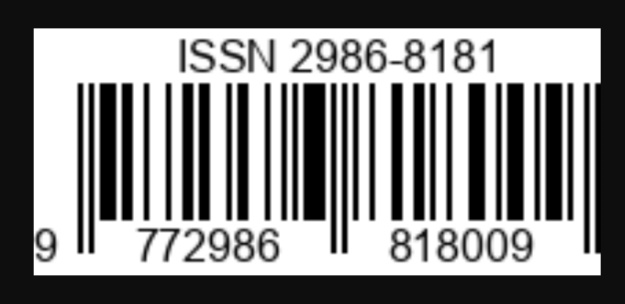How do The Macroeconomics Variables Influence the Net Asset Value (NAV) Growth of Sharia Mutual Funds in Indonesia?
Abstract
The macroeconomic indicators play an essential role in expanding the Islamic capital market sector in Indonesia, particularly Islamic mutual funds, furthermore monetary stability in the domestic economy will affect the increase in people who invest their funds in Islamic mutual funds instruments. Net asset value (NAV) is one of the indicators used in measuring the performance of a mutual fund, based on data on the net asset value of Sharia mutual funds in Indonesia in the last two years, it has decreased until the new normal era. This research aims to determine how macroeconomic indicators affect the net asset value of Sharia mutual funds partially and simultaneously in Indonesia from January 2017 to October 2022. Monthly data over the 2017-2022 period were analyzed using the Linear Ordinary Least Squares (OLS) regression method, with inflation, BI Rate 7 days repo, money supply, exchange rate, and index of ISSI (Indonesia Sharia Stock Index) as independent variables, and net asset value of Sharia mutual funds as the dependent variable. According to the study's findings, this research shows that partially, money supply, exchange rate, and index of ISSI significantly influence the net asset value of Islamic mutual funds in Indonesia, on the other hand, the inflation and BI rate had an insignificant effect on the net asset value of Islamic mutual funds. Simultaneously, all exogenous variables affect the net asset value of Islamic Mutual Funds in Indonesia.
References
Aldiansyah, Fifi AT, Fatmi Hadiani. Analysis of Factors Influencing Net Asset Value of Islamic Mutual Funds (2016-2019 Period). Journal of Applied Islamic Economics and Finance.Vol. 1, No. 2, February 2021, pp. 412–423
Ardhani, IA, Jaenal Effendi, Mohammad Iqbal Irfany. The effect of macroeconomics variables to Net Asset Value (NAV) growth of sharia mutual funds in Indonesia. Journal of Islamic Economics & Finance, Vol. 6 No. 2, July 2020: 134-148.https://journal.uii.ac.id/index.php/jeki
Arifin, MR & Muhammad AN. Performance Stability of Islamic Mutual Funds in Facing Macroeconomic Turmoil. Indonesian Journal of Islamic Literature and Muslim Society. Vol. 4, No.2, July-December 2019, ISSN: 2528-1194 (p); 2528-1224
Azifah, N, Stevani ANH, Siti Aisyah. Determinants of Macroeconomic Indicators on Sharia Mutual Funds in Indonesia for the 2014-2021 Period. Jurnal Jaman. Vol 2 No. April 1, 2022, pISSN: 2828-691X, eISSN: 2828-688X, Pages 56-67
Bank Indonesia. (2020). Indonesia Economic Report 2020.
Kurniawan, Masitoh E, and Fajri, RN (2020). The Effect of Macroeconomic Variables on the Growth of Corporate Sukuk in Indonesia. Journal of Islamic Accounting and Banking, Finance Vol 3.No1, 2020.
Malik FA & Hasan H. Analysis of the Influence of Rupiah Exchange Rate for US Dollars, Sharia Indonesia Stock Index (ISSI), and Inflation on Clean Actual Value of Sharia Reksdana in 2013-2017 Period. International Journal of Economics, Business and Management Research.Vol. 4, No. 08; 2020. ISSN: 2456-7760
Miha, C & Laila, N. The Effect of Macroeconomic Variables on Net Asset Value (NAV) of Islamic Mutual Funds in Indonesia Journal of Theory and Applied Sharia Economics. Vol. 4 No. February 2, 2017: 144-158
Muhammad R, Imtinani Arifah, Peni Nugraheni. Factors Influencing the Performance of Islamic Mutual Funds in Indonesia and Malaysia. Ocean Journal of Economics and Business. Volume 12, Number 2, July 2021. Faculty of Economics, Samudra University. DOI number 10.33059/jseb.v12i2.2556
Nur Kholidah, Mifahur Rahman Hakim, and Edy Purwanto, "Analysis of Sharia Equity Mutual Fund Performance Using the Sharpe, Treynor, Jensen, M2, and T Method," Indonesian Interdisciplinary Journal of Sharia Economics (IIJSE) 1, no. 2 (2019), pp. 29–40
Otoritas Jasa Keuangan. (2021). Sharia Financial Progress Report.
Pandjaitan, DR H and Aripin, A. (2017). Research Methods For Business. Media heritage.
Pardiansyah, E. (2017). Investasi dalamperspektif ekonomi Islam: Pendekatan
teoritis dan empiris. Economica: Jurnal Ekonomi Islam, 8(2), 337-373. doi :
21580/economica.2017.8.2.1920.
Pramudiyanti H, Indrawati, L.R, dan Rusmijati. (2019). Pengaruh Variabel Makroekonomi terhadap Pertumbuhan Sukuk Korporasi di Indonesia Tahun 2002-2018. DINAMIC: Directory Journal of Economic Volume 1 Nomor 4 Tahun 2019.
Putra and S. Fauzie. Analisis Perbandingan Kinerja Reksa Dana Konvensional Dengan
Reksa Dana Syariah Di Indonesia. Jurnal Ekonomi dan Keuangan. Vol. 2, no. 5 (2014), pp. 282- 295
Rapini T, Umi Farida, Rizki Listyono Putro. Eksistensi KInerja Reksadana Syariah pada Era New Normal. Jurnal Tabarru’ : Islamic Banking and Finance. Volume 4 Nomor 2, November 2021.
p-ISSN 2621-6833 e-ISSN 2621-7465356
Ridha, N. (2017). Proses Penelitian, Masalah, Variabel, dan Paradigma Penelitian. Jurnal Hikmah.
Sukirno, S. (1997). Pengantar Teori MikroEkonomi (2nd ed.). PT. RajaGrafindo Persada.
Website:





